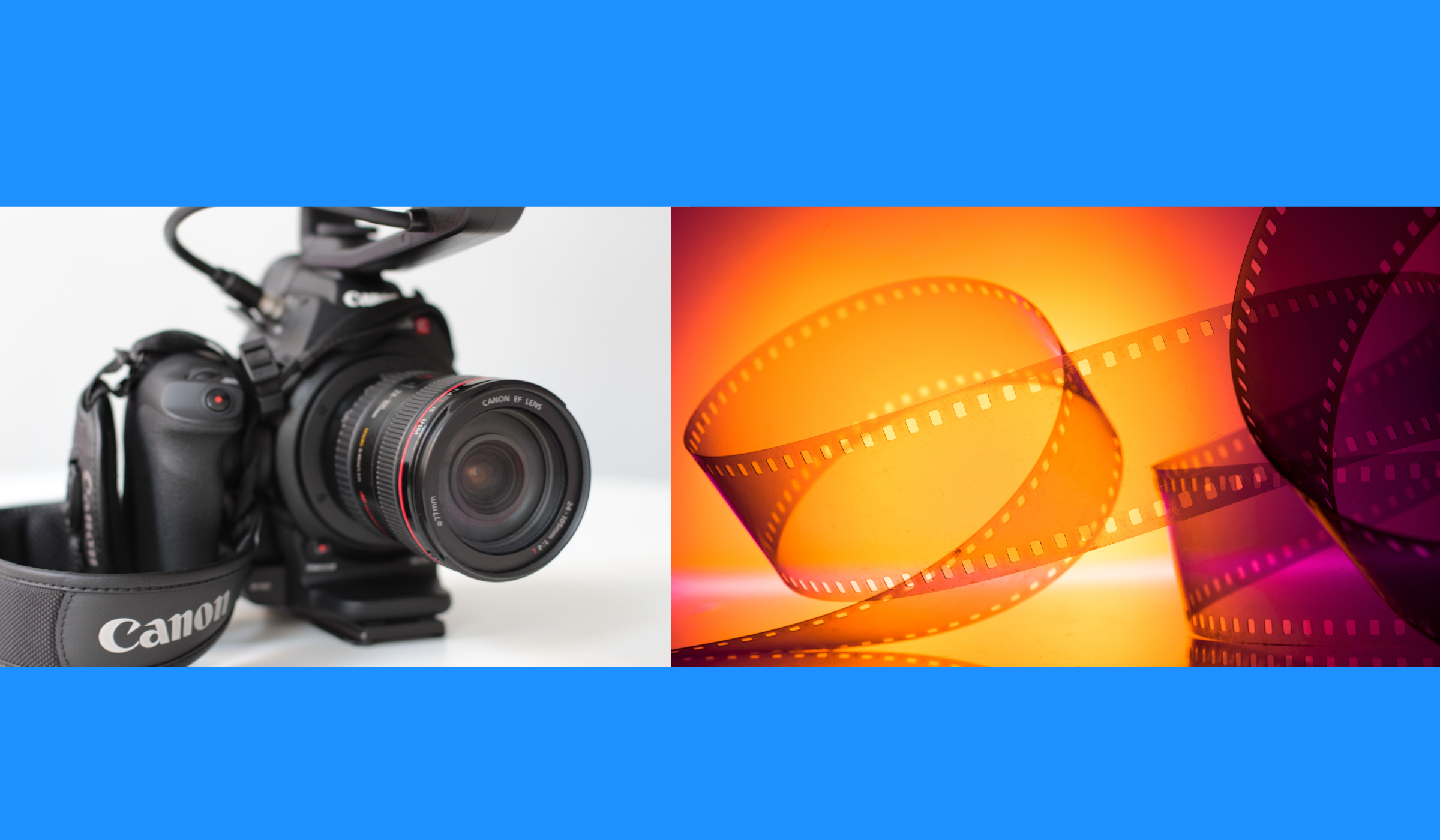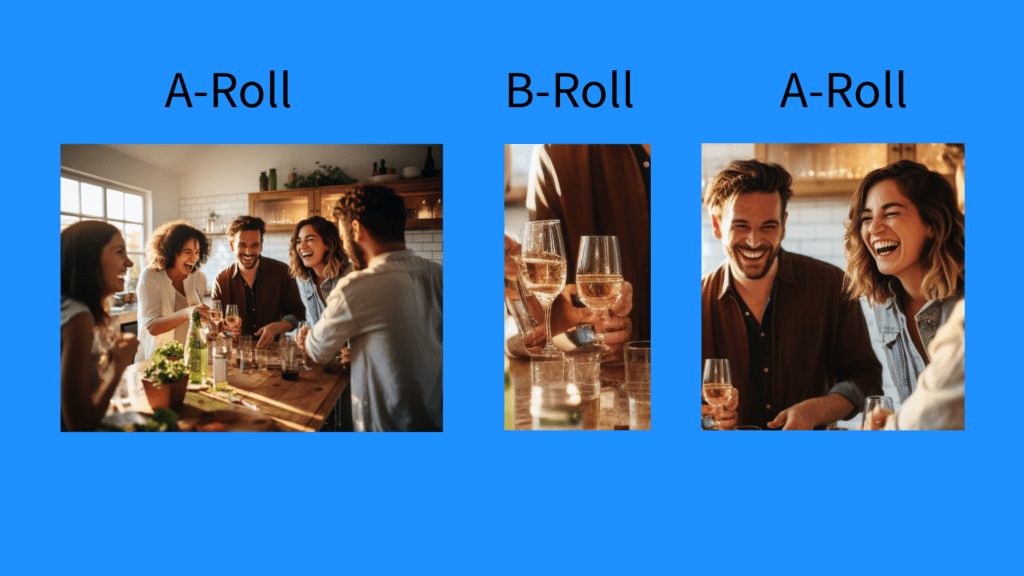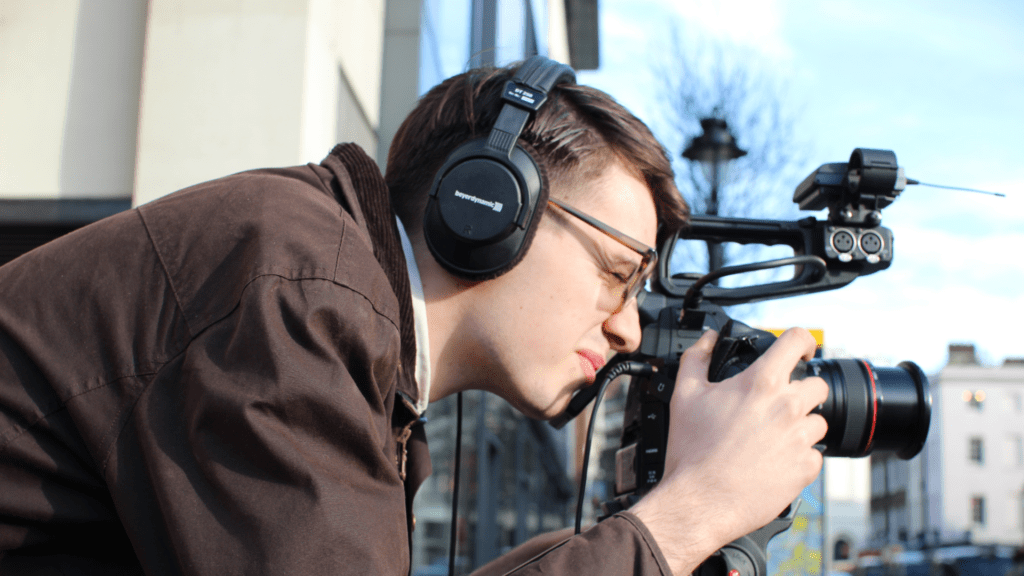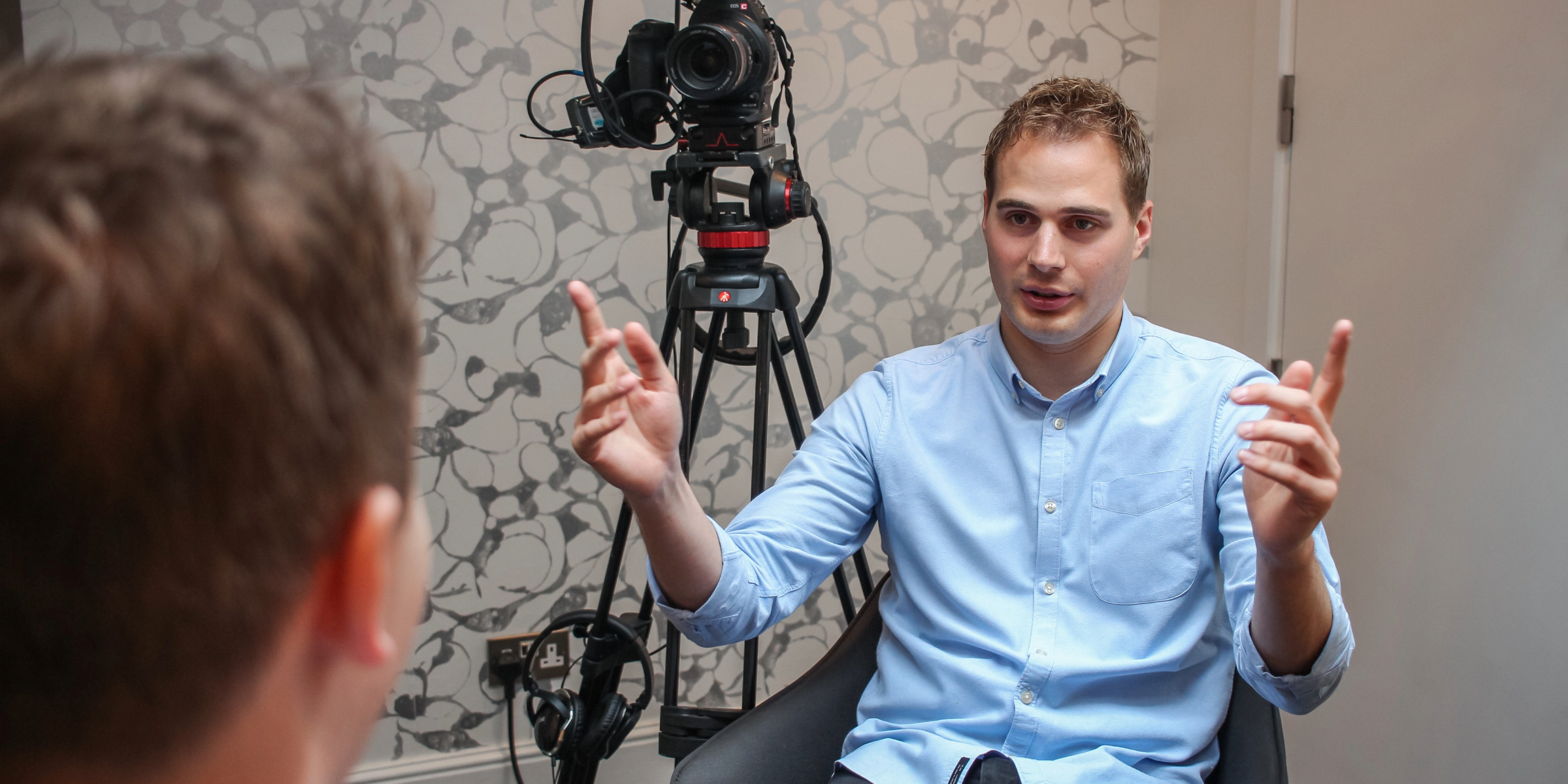What is B-roll and why is it so important for for the broadcast industry? If you’ve ever commissioned, or being involved in PR video production you may have already heard the terms A-Roll and B-roll, and perhaps wondered what the difference between them is. They’re particularly evident in the worlds of broadcast and film, the latter being the industry where the names were born.
In general, you’re talking about using two cameras for the one shoot. The first camera produces the A-Roll, with the most important footage, and the second camera produces the B-Roll with the extra shots, often used to make an edited video package visually more interesting.
So why, and what, do you need to know about A-Roll and B-Roll in terms of broadcast PR? This a-roll vs b-roll comparative guide will give you everything you need to know.
What is A-Roll?
Historically, the first camera, the one producing the A-Roll, was responsible for getting the most important content, be it an interview or pictures to illustrate an interview or cover over a voiceover. If you were filming pictures for a movie these would be the most important, main shots, as opposed to cutaway shots which are used for editing. Alternatively, your most important content might be an interview. These principles particularly apply for the film industry pre-digital times.
What is B-Roll?
Traditionally, B-Roll was used in the film industry to supplement content featured on the A-roll. Mainly it had a technical purpose. It was used as part of the editing process, when two pieces of film were cut and then spliced together. In order to avoid a “jump cut” a contrasting shot was needed to cover over the edit. If the A-Roll shot was a wide view, then the B-Roll shot would need to be a close-up. Two adjoining shots that are similar jar on the eye, but contrasting shots ensure a smooth edit.
A-Roll and B-Roll in PR today
In broadcast PR terms, A-Roll is more likely to refer to a complete, edited video package which is finished and ready to be used. A-Roll was used by US broadcasters sometimes in its entirety. That was great for PR because a brand could maintain complete editorial control. But UK broadcasters have historically been more picky, and would never run a video package that had been filmed and edited by external sources. UK journalists say a package produced externally would be a compromise on their editorial standards because it’s paid for by a brand seeking air-time.
Today the term A-roll is less widely used and it’s really metamorphosed into a short, edited video suitable for social media, or a corporate film on a website.
Top Tips For Producing A-Roll
- Start any video package with the best shot. As they say, you only have one chance to make a first impression and the same rule applies here.
- For social media shoot any interviews wide enough so you have the option to include sub-titles. Strange though this, people often browse social media on mute!
- Used effectively, a music underlay can help engage audiences more.
- Consider a call to action at the end of the video. For social media this could be used to drive traffic to a corporate website. For corporate video it would be to push a potential client further along the sales process, perhaps encouraging them to email or phone for more details of your products or services.
B-Roll for PR campaigns
But as the presence of A-Roll decreases, B-roll has become the star. Many video PR projects don’t have the benefit of two cameras, instead one crew does all the work. That means the one camera must encapsulate the main action and/or interviews, but collect some establishing and editing shots too.
By B-Roll we mean around 6-8 minutes of roughly edited footage which is distributed to broadcasters free of charge and any copyright issues. The hope is that the broadcasters will use the carefully selected shots, re-editing them and sometimes adding in some of their own footage, to illustrate a story.
As former TV journalists we know that, given the choice between two PR stories, one that comes with just a press release and the other accompanied by B-Roll, broadcasters will choose the latter. For years we have had two golden rules for B-Roll to ensure it gets used by national and regional television journalists.
The Two Golden Rules
Rule 1:
Include content in your B-Roll that broadcasters can’t easily film for themselves. TV newsrooms are often short of resources so if something takes a long time to capture, or, for nationals, is outside the city where they are based (namely London, but also Leeds and Manchester) then they may well be grateful for some free footage.
In the past, national broadcasters had satellite offices based around the country, but nearly all of these are gone. So a story would have to be really amazing for broadcasters to allocate a crew to go too far afield.
Rule 2:
Shoot the footage in the same way a TV news crew would. News footage is very different from say an advert. It’s basic, not glossy, therefore your B-Roll footage needs to be the same. A crew filming an advert or a movie will spend hours setting up lighting, which gives you that perfectly shot, highly produced look. But news crews are more likely to be in a rush. A light on top of a camera or the most a light on a single tripod is all you’re going to get.
How the camera captures the content is also critical. Watch the news tonight and you’ll see that the shots are quite simple, there’s not much movement. Most shots will last about 4 or 5 seconds, unless there’s some action lasting longer. The camera rarely pans (meaning it moves from left to right, or right to left). That’s because a whole news video package is quite short – just 1.30 to 2 minutes typically. The same applies for zoom shots. Once edited there isn’t enough time to include a long shot, news is much snappier than this.
How much A-Roll vs B-roll should you shoot?
Well, there’s no real answer to this question, as it all depends on what you’re shooting. Each project is different. As a rough rule of thumb however you probably need about twice as much B-roll as you do A-Roll.
A better question perhaps, is to ask how long should an edited, complete video package be. This answer also depends on the project. A corporate video on a company’s website, for example, should be no longer than a couple of minutes long. It’s helpful to compare how long a TV news package is. ITN’s are the shortest, 1.30 – 2.30 long. The BBC’s main bulletins on BBC One are a similar length. Only Channel 4 News and Newsnight (for now, but the format is about to change and investigative news packages are about to be changed for panel discussions) indulge in longer packages, up to several minutes long.
As another rule of thumb, you might shoot five times as much footage as you have finished edited video package.
There are many variables however. How good or not a spokesperson is can hugely influence how much you film. If you have a poor spokesperson you might record an answer multiple times. The same for staged events – unless you have a live event you’re going to film a scene until it looks as good as possible, no matter how long it takes.
Editing a B-roll
In terms of securing coverage for your B-Roll, how you present it is almost as important as how you film. As with any edited video package, you should put your very best and most significant pictures at the beginning. That’s because you don’t have long to attract the interest of a journalist and this is where they’re going to start watching.
Broadly speaking every scene you shoot needs an establishing (wide) shot, to set the scene; then a mid-shot; plus a handful of close-ups. B-Roll should be kept short, but you need to include a variety of shots just in case you’re lucky enough to have more than one news broadcaster use your footage – and this gives them a chance of making their edit appear unique.
Any interviews need to be cut down to three or four short clips, no more than 30-40 seconds long. Don’t edit the answers, as this can appear like you’re trying to manipulate the content. If there’s an obvious error it’s better to leave it in and the broadcaster can edit themselves.
To make it easy to view we put slates between each section of pictures and/or interview slates. The slates have titles on them so it’s very clear what the viewer is looking at. It’s also important to put on one of the slates that the content is free to use and copyright free.
In summary, the difference between A-Roll and B-Roll
Historically, the difference between A-Roll vs B-Roll is distinct. A-Roll represents the core of the story, such as an interview with a significant person such as a CEO or a celebrity spokesperson. Alternatively, it could mean important pictures, perhaps the launch of a product, an occasion or an event.
B-Roll, meanwhile, gives you extra shots which, as well as helping in editing, can provide context and background.
These days, in terms of broadcast PR, the A-Roll and B-Roll are more likely to be shot together by just the one camera. Certainly the core shots and the additional shots will be merged together in the edit. As we mentioned above, A-Roll today is a finished, edited package, such as a corporate video. B-Roll appears more rough and ready – unfinished content that needs to be re-edited into something more polished.
Examples of A-Roll and B-Roll today
To understand the difference between A-Roll vs B-Roll it’s helpful to consider some examples that could be part of a PR campaign.
Example 1
We were involved in the promotion of a premier dog food brand based in Scotland. The campaign was based on commissioned PR research involving dog owners talking about what made their pet happy. There were interviews with the CEO/founder of the dog food brand and vox pops with dog owners in the park. These formed the basis of the A-Roll because between them they explained the story.
Pictures of a dog eating the dog food, at home in a kitchen, and dogs playing in the park were captured. Those formed the B-Roll.
Example 2
We supported P&O Cruises with the launch of their newest cruise ship Arvia, which took place in Barbados in March, 2023. The ceremony took part over two sites – one based on the ship and the other on a beach.
Above and beyond anything else, the most important element of our filming was when the ship’s Godmother, Nicole Scherzinger, pressed the button releasing a bottle of champagne, officially “naming” the vessel.
Arguably, interviews with her and a P&O Cruises senior spokesperson, explaining what was happening were also A-Roll.
Interviews as stand-alones are not as interesting as pictures. So B-roll, including Olly Murs performing at the beach location, and P&O Cruises’ passengers onboard the ship applauding the Godmother, were crucial.
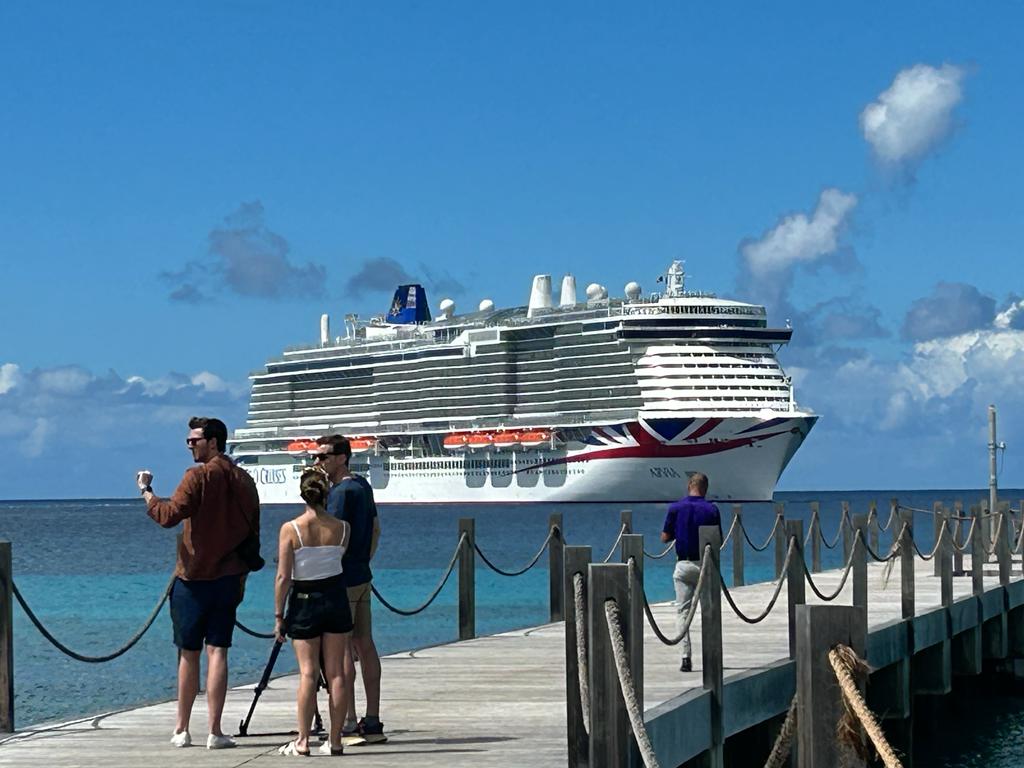
For best return on investment
B-Roll offers a fantastic return on investment because, produced the right way, as described above, it can make the difference between a PR story being used or being turned down. Because it’s not a glossy production the filming and editing doesn’t take long – most of our B-Rolls are produced within one to two days. On average you’re paying between £2, 000-£4,000 depending upon the story and location of course.
To maximise your investment though, commission a little bit more editing and as well as B-roll you could have an A-Roll too. As mentioned earlier, A-Roll just means a finished video package these days. You could do one version for social media, another for your corporate website.
It’s good to know ahead of any filming though that you’re doing this. That way you can capture a bit of extra branding that you probably wouldn’t include in a B-Roll but you would get away with on Instagram, FaceBook or TikTok for example.
Interested and need help with your own A-Roll or B-Roll?
We offer a full video production service and can help you from concept to completion. Our camera crews and producers have all worked in television news so can follow the advice above to a T.
We’ve been producing A and B-Roll for over twenty years and every client who has followed our golden rules above for the latter has seen their footage on UK television.
If you’d like more information about our video production services find more details here https://shoutcommunications.co.uk/what-we-do/video-production/ or speak to our production team on 020 7240 7373 or email hello@shoutcommunications.co.uk.
